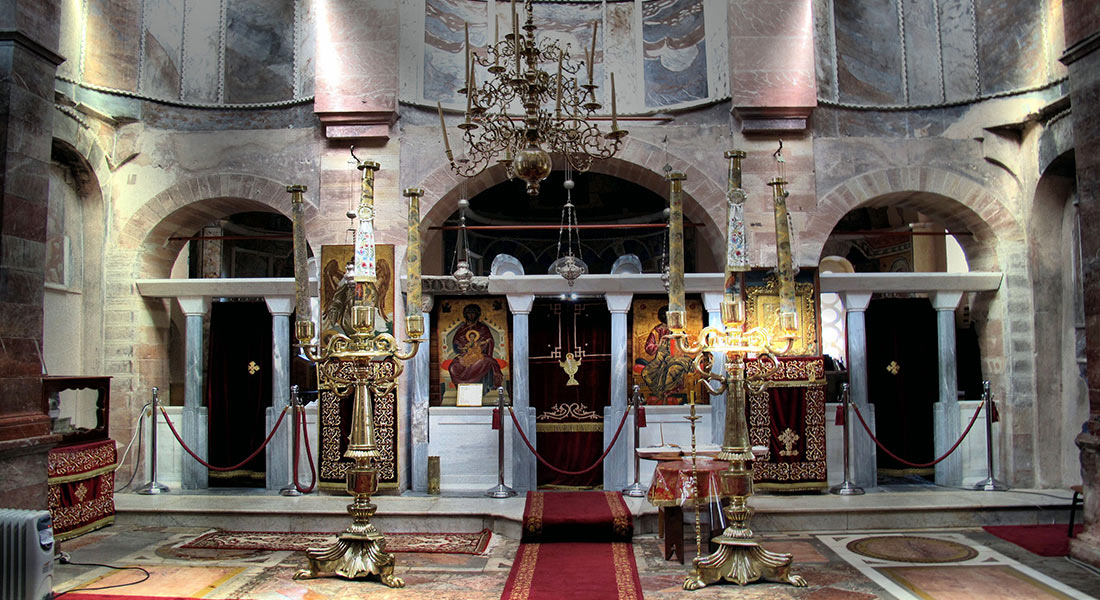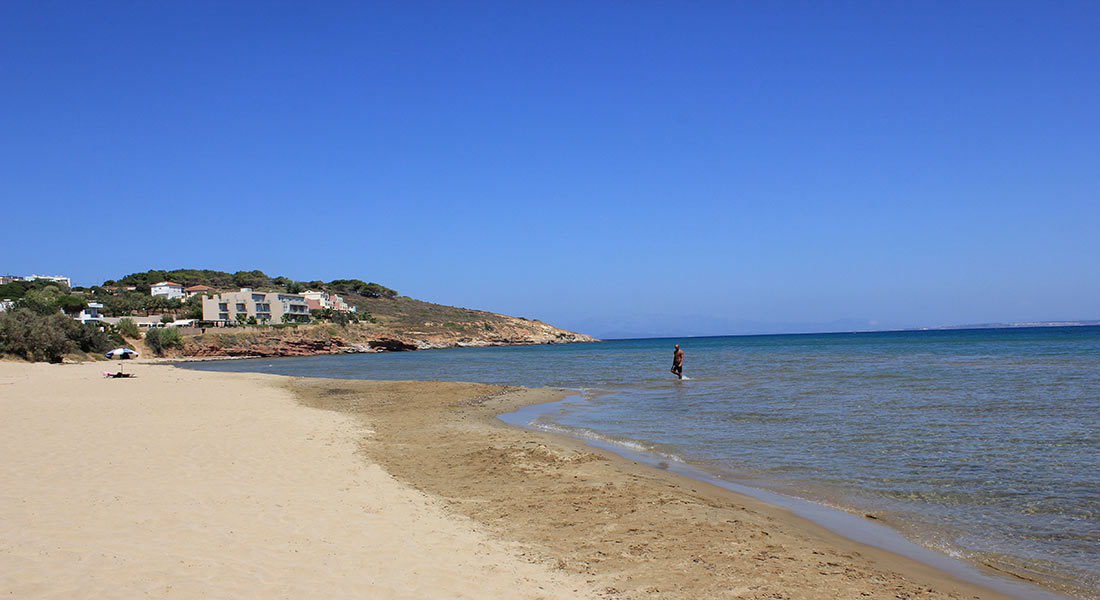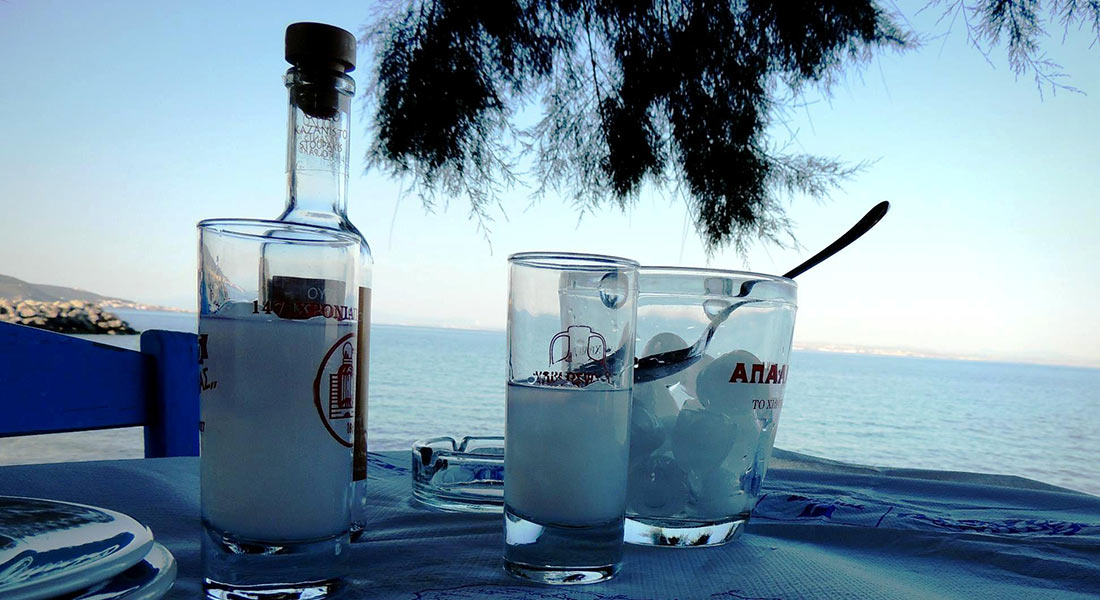Elegant, Perfumed and Proud
Chios is the 5th largest island of Greece, situated in the eastern Aegean Sea, just a few miles away from the Turkish coast and the low mountain lines of East.
Since the ancient years right up to today, travelers and writers talk about the mastic island and praise the beauty of the natural setting and the warmth of the residents.
Chios is the well hidden secret in the heart of the Aegean Sea. It is the homeplace of Homer, Ionian, Buzantium and also the place of the Genoese nobility, as well as being the birthplace of Adamantios Korais and Konstantinos Kanaris.
It is a crossroads of great civilizations that was envied in the ancient years, loved by the Genoeses and Europeans, and even the Ottomans treated it softly at the beginning of their ruling.
It is the elegantly perfumed island of mastic and Jasmine and the distinguished perfumes that come from the valley. It is the magnificent island with the stone marble mansions, the yards covered with mosaics made of pebbles and the unique and wonderful medieval villages. It is a place that prides itself on its naval tradition.
With its stunning coastline with 91 beaches and the monastery monuments from the early Christian years up to today, no matter how long a visitor stays in Chios, there is always a piece hidden, waiting to be discovered and cherished.
Places Worth Visiting in Chios
The Majestic Villages
The picturesque villages, built as a castle with internal narrow alleys resembling a labyrinth, Byzantine churches, virgin beaches and the fine perfume of mastic are the perfect setting for your holidays in Chios. The impressive villages become the motive for an unforgettable experience, with the medieval ambience almost overpowering. Here thrives the famous mastic, which is produced by the mastic bearing trees which are cultivated only in the southern part of the island. These unique trees have been known of since the ancient years and has made the island famous all over the world. The most important and best preserved villages of Chios of them are:
Mesta - The best preserved medieval village, with the impressive fortress architecture and the 14th century old church of Taxiarhis. The walk through the narrow alleys, under the arches that are formed by the balconies of the renovated stone houses, takes the visitor into another era, full of secrets and charm.
Pirgi - Known as the painted (Zografisto) village, it is the most interesting in terms of folklore. Most impressive are the “Pirgousika” (derived from the name of the village) houses, with the “Xista” (scratched / carved) decorative geometrical designs in alternate black and white colour.
Armolia - A small village that has centuries old traditions in ceramics, as its people are masters of the art of creating and decorating ceramic ornaments and household objects. At the church of Panagia which is connected with the central church of Agios Dimitrios, you will see one of the most beautiful iconostasis on the island, dating from 1744 A.D.
Very beautiful and equally impressive are the villages of Kalamoti, Nenita, Olympi, Vessa, Patrika, Vouno and Kini. All of the medieval villages are among the most important in Greece and all have exceptional beauty. Don’t miss the chance to visit the cave of Olympi, which has a rich decoration of stalactites and stalagmites and is of the most impressive and beautiful caves in all of Greece.

Byzantine Churches and Monasteries
A visit to Chios can also be a visit to the monastery and churches that cover the island under the bright Ionian light. Chios is not only the island of mastic and lemon flowers. It is a sacred place that was brightened by the life and the miracles of 22 local saints. Some of the most impressive religious monuments that are worth visiting include:
Nea Moni - The most important Byzantine monument on the island and which is under the umbrella of UNESCO, protected as a heritage to the world. Here you will see the very impressive mosaics and frescos from the 11th century A.D. According to the monastery legend, the emperor Kontantinos the Gladiator was the one who fully financed the construction of the monastery, after the finding of the miraculous icon of Panagia, by the three Chios monks Nikitas, Ioannis and Iosif, on a myrtle tree in the location where the monastery is today.

For many centuries, it was the religious and financial center of Chios, while its decline began in the 19th century with financial difficulties at the beginning and with the mass slaughtering by the Ottomans in 1822. The mosaics of Nea Moni are classified amongst the most important creations of Byzantine art, thanks to their magnificent quality and the fact that the masters who created them were artists that were occupied by the larger and greatest workshops in Constantinopole.
The Holy Pilgrimage of Saint Markella - This place is located 6km from Volissos and is found on the spot, where according to legend, the saint was martyred around the 1500 A.D. The spot where the Saint’s decapitated head fell, very often has flowing mineral water from a spring with natural healing properties. Saint Markella is the patron and protector of the island and on her name day on 22nd July, it is a bank holiday on the island, with many visitors from all over Greece travelling to Chios to pay their respects.
Saint George - It was a Byzantine church that was turned to a Catholic church and afterwards into a mosque. Since 1912 it has been operating as an Orthodox church, and has kept important religious relics from the fugitives from Minor Asia.
Panagia Krina - It is a Byzantine church from the 13th century with exceptional painted decorations. It is located in the village of Vavila.
The monastery of Moundon - Near the village of Diefha, is a monastery cloister, probably the second most important after the Nea Moni monastery. It is dedicated to Saint John Prodromo (Agios Ioannis Prodromos) and has very impressive iconostasis and frescos. At the monastery’s temple you can see frescos dating from 1730, which are in exceptional condition and have a very impressive expression and bold diversity.
Panagia Agiogalousaina - This is a Byzantine church built at the entrance of the cave of Agio Gala. It has mosaics from the 15th century and a very impressive wooden carved iconostasis dating from 1721.
Amongst other very interesting religious places to visit in Chios are Agii Apostoloi at Pyrgi with exceptional mosaics from the 13th century. Others include Panagia Sikelia in the village Exo Didima with an impressive wooden crafted iconostasis, the old Taxiarhis at Mesta village, Agios Minas at Neohori a monastery connected with the slaughter by the Ottomans in 1822, the monastery of Pamegiston Taxiarhon at Nenita and a chapel built at the holy ascetic cave of Agii Pateres (near the Nea Moni monastery). It is dedicated to the founders of Nea Moni monastery.
Kampos
Kampos is one of most beautiful areas on the island and is a unique part of Chios that has nothing in common apperance-wise as the other Aegean islands. It’s a place where you can live with all your senses, as the natural beauty is combined in harmony with the local architecture characteristics. Amongst the orchids with the orange and citrus trees emerge mansions with tall walls made by the local reddish stone from Thymiana, yards with pebble mosaics and traditional wells. At Kampos you can get an idea of the glorious past of Chios, that is described by foreign travellers from the 16th and 17th century. Buildings of the Genoese aristocrats, Byzantine officers and local wealthy traders in a period of 5 centuries up until 1822, continue to decorate island. In just this area alone are 38 Byzantine churches and 64 mansions that were listed under preservation by the ministry of culture.
Beaches
Chios has 91 beaches that can satisfy the needs of almost every visitor. There is coastline covered by sandy beaches, small bays and coves, with crystal clear waters and magnificent natural beauty.

If you prefer to visit an organized beach awarded with the Blue Flag for the exceptional quality of water, you can visit the beach of Agia Fotini which has pebbles on the coast and sand at the sea bottom, or Karfa which is the most cosmopolitan beach of Chios with thin golden sand. But the most famous and popular beach is Mavra Volia with crystal clear waters, near the coastal village of Emporio. This beach is unique thanks to its totally black pebbles that give the sea a dark color and were derived after a volcanic eruption in the area.

In north Chios at the Kardamilla area you will find the beach of Yiosonas and Nagos, two beaches covered by marble white pebbles, that perfectly combine the sea and the rich vegetation.
Other cosmopolitan and beautiful beaches include Megas Limionas, Komi, Vroulidia, Lithio, Glari and the Bay of La.
For a more quiet atmosphere but equally beautiful ambience you can go to the west and north coast of the island. There you will find beaches such as Managros, Magemena, Agia Markella, Nagos, Kato Fana, Agia Dynami, Avlonia, Apotheca and many others.
Things you MUST sample
• Mastic - The unique product of Chios, that made her famous all over the world. Mastic and the products that have its essence and the beneficial properties.

• The traditionally made preserves of citrus fruits (tangerine, mandarine, orange, rose petals, lemon flowers, pistachio, figs, small eggplant, lime, shour cherry, cherries, quince and more).
• The famous souma drink, which is made only in Chios with distilled figs. When it is mixed with various fruits, it takes the characteristic name, as well as the unique aromatic character.
• The local liqueur with the taste of mastic, cinnamon, mandarin, orange, rose and more.
• The local wines.
• The famous local ouzo drink.

• Chios traditional sweets (masourakia, almonds sweets, etc).
• Traditional fruit juices from the trees of Kampos.
• Hand-made macaroni pasta.
• The dairy products of Chios such as mastelo cheese, made by milk from cows breed and living on the island, and this is why it is balanced and gives a product with soft texture and refined aroma.
Did you know ?
1. Wine was one of the most famous and distinguished products that Chios was producing and trading during the ancient times. Dionysus the God of wine, according the myth, gave his blessing on this island. As the historian of the ancient years Theopompos says: ”Oinopion was considered son of the wine God, and was he who taught the people of Chios how to plant and cultivate vines and produce the black wine. Poets and historians called it the "Nectar of the Gods", while it was called "Homerical wine" by the travelers and the expeditionists who visited Chios in the early years. During the Roman symposiums the wine from Chios was well accepted and it was the one they were drinking, leaving aside luxurious wines from Italy. It was used also in medicine and is referred as a very powerful medicine especially for stomach illnesses.
2. Around 600 B.C. it was for first time ever, established in Chios the “Great Clause”, the statute of the Chios constitution, which is considered the 1st democracy in the world. It is said that Solon, who had visited Chios, was inspired by the “Great Clause of Chios” and thus has formed the laws that were the foundations of the Athens’ Democracy.
3. “Chios’ Life” is a proverbial expression of the ancient Greeks, that was used in order to express that a co-citizen of theirs, lives a luxurious and comfortable life.
4. The art technicians that decorated the interior of the Nea Moni monastery are of the same school as the ones who decorated the temple of Agia Sophia in Constantinople.
5. In 1474 Christopher Colombus arrived in Chios. He disembarked at Daskalopetra and was hosted by a Genoese noble. Many historians state that Colombus arrived in Chios, in order to obtain nautical maps for his long journey. It is probable that he chose sailors from Chios to be members of his crew ship.
6. Mostra is the most known carnival celebration of Chios and takes place at Thymiana, every last Sunday of the Carnival season. The custom has its roots in the medieval times when pirates were looting the coasts and grabbing the harvest of the local people of Chios. The young people dance the Talimi, a peculiar dance that represents the moves of fighting warriors holding big swords.
7. Easter celebrations in Chios include the famous Rocket war, a custom that has its roots in the period during the Ottoman occupation. That was “war” between the parish of Agios Markos and the parish of Panagia Erythiani. As the old people tell their stories, this started as a game between two children of the two parishes that were playing stone warfare with slingshots.

Then the adults got involved and it got serious, as they were using real guns known as “souritades” instead of slingshots and later they were even using small cannons that were brought from the decommissioned ships.
That was going on for many years and the whole “war” situation became uncontrollable in 1889, with the two parties ruining the pebble mosaics of the churches, so they can use the pebbles as ammunition for the cannons. The Turks got worried by the people using cannons and guns, in case they started a revolt against them. So they confiscated the cannons and transferred them to Chios castle. But the parishes weren't happy and they began thinking of ways to “keep fighting in this war” with something impressive but safe on the other hand, so it won’t be forbidden by the Turkish law.
The solution was found from the parish of Saint Markos and a pyrotechnist named Korakakis who had his workshop in the town. He made some rockets which they were transferred at Vrontados. So the two parishes chose their targets (for Panagias’ parish – the Panagousous - was the dome cubes and the lion of Saint Markos his emblem on the gate of the temple, while the target of Agiomarkouson was the Clock of Panagia Erythiani in the parish of Saint Markos.